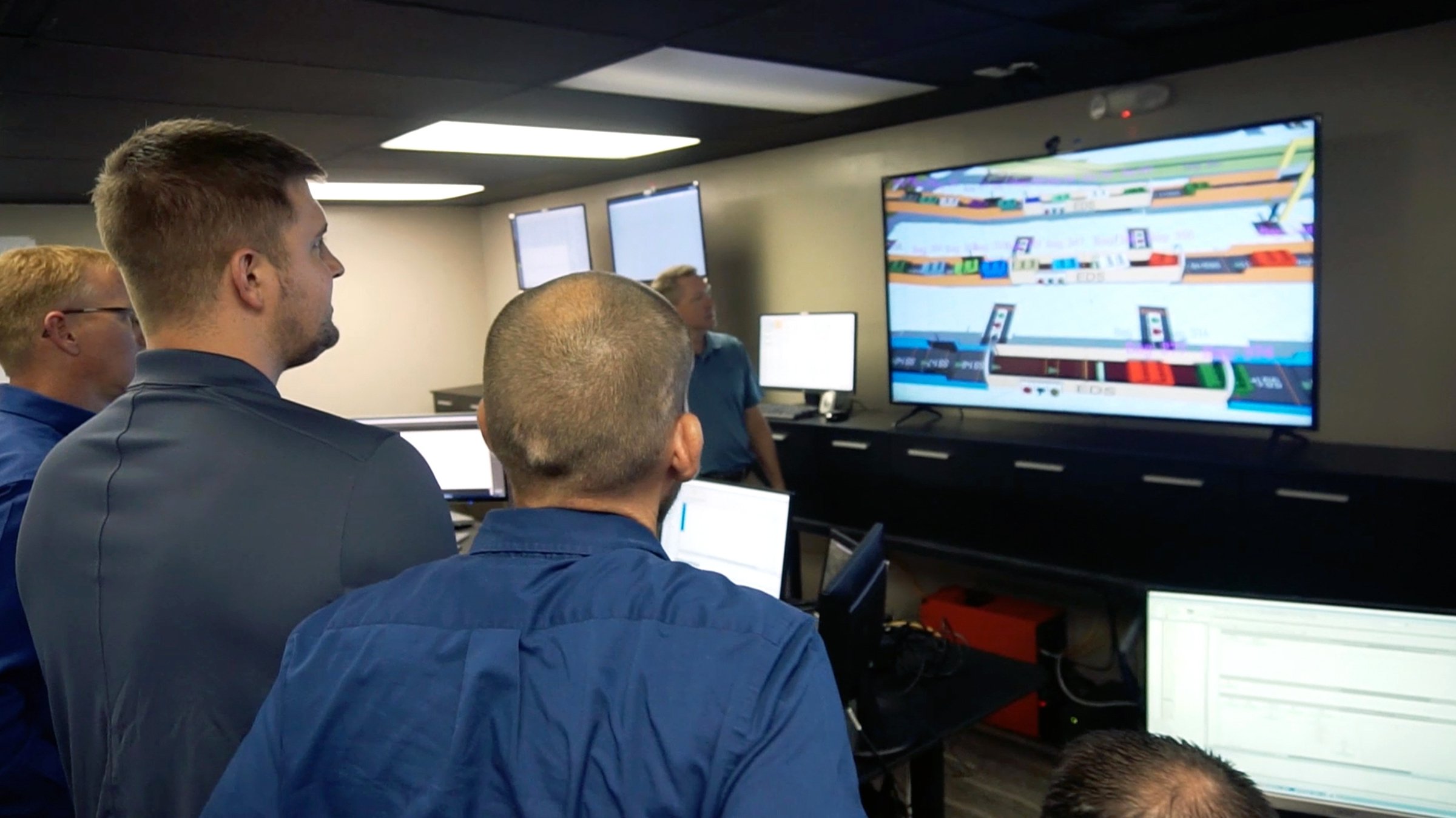Reuniting passengers with their checked bags is routine at any airport. But behind every baggage claim carousel is a complex network of flight schedules, reservation systems and conveying equipment. And a baggage handling system (BHS) that must track, sort and accurately allocate every piece.
Kasa Controls & Automation is up to the task. Since 1974, the Kansas-based company has delivered control and automation systems to customers in industries ranging from automotive and paint finishing to grain handling. Kasa also applies its extensive material handling expertise to provide baggage handling solutions – and is building a leadership position in that market.
“Every project is a new puzzle,” said Syd Panzer, programming engineering manager, Kasa Controls & Automation. “We take pride in collaborating closely with our customers to define scope – and design systems that deliver the data they need to solve business challenges.”
Unique Challenges & Requirements
No matter the industry – and whether it’s a greenfield or a brownfield project – an aggressive implementation schedule is typically part of the equation for any system integrator.
“As the controls integrator, we’re usually the last team on the job site before production or operation begins,” said Adam Casada, emulation manager, Kasa Controls & Automation. “That means our schedule is often at the mercy of several contractors ahead of us, and any delays in their schedule results in compression of ours.”
But building a BHS for a new airport terminal or optimizing an existing system introduces additional challenges.
BHS solutions often control miles of conveyor belts and photo eyes – and must integrate with flight scheduling, passenger information, and TSA baggage screening systems. To minimize any disruption in service, building redundancy throughout the Rockwell Automation control system is essential.
“Typically, we build a redundant control system using Allen-Bradley® ControlLogix® controllers,” Panzer said. “Of course, controls testing is also critical.”
To help ensure systems will be delivered on time and operate to specification, BHS projects increasingly require controls testing based on emulation software.
A Better FAT With Emulate3D Software
“Our entry into the baggage handling market led us to Emulate3D™ software,” Casada said. “Our customer required a digital twin to validate the PLC code before coming on site.”
With Emulate3D software, Kasa can build an accurate virtual model – or digital twin – of the BHS during the design phase. Modeled equipment is a facsimile of the real equipment, complete with physical and digital parameters such as speed and acceleration, gravity and friction, wiring and IO, and other parameters.
By connecting the PLC and SCADA control system to the model, and running modeled baggage through it, Kasa can accurately test the controls, long before the real system is available. Emulation also enables Kasa to address multiple scenarios quickly during the Factory Acceptance Test (FAT).
“Emulation drives the FAT,” said Panzer. “The software allows us to mimic exactly what the real system would do – and manipulate the bags within the model according to each task.”
Using the software, Kasa also created tools that streamline some testing processes. For example, one test requires a bag to advance to a photo eye faster than anticipated based on conveyor speed. Manipulating the virtual bag with a mouse is one way to execute the test.
“With Emulate3D, I created an easier way to show a common problem that can happen to bags as they flow through a system,” explained Alan Pereira, senior controls programmer, Kasa Controls & Automation. “Usually, you would try to recreate this problem in a simulation software by using your mouse to manipulate a bag – but that is actually time-consuming and not very accurate.”
“My handling test created in Emulate3D, showed exactly what would happen if this problem would occur – correctly every time,” Pereira continued. “This minimized rework and sped up the acceptance process.”
Less Time On Site
Ultimately, the ability to test the controls virtually leads to less time on site – and faster system commissioning overall.
“Due to the COVID-19 pandemic, we conducted a successful FAT over Zoom for a customer,” said Panzer. “Emulation gave them so much confidence, we were able to significantly reduce our startup time frame.”

